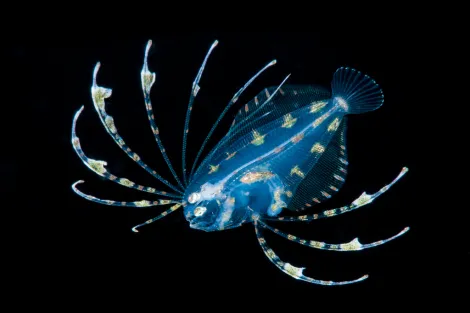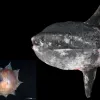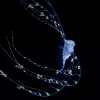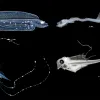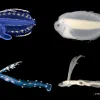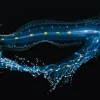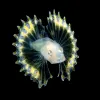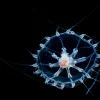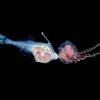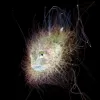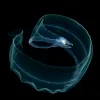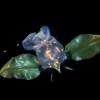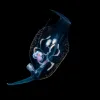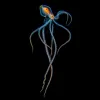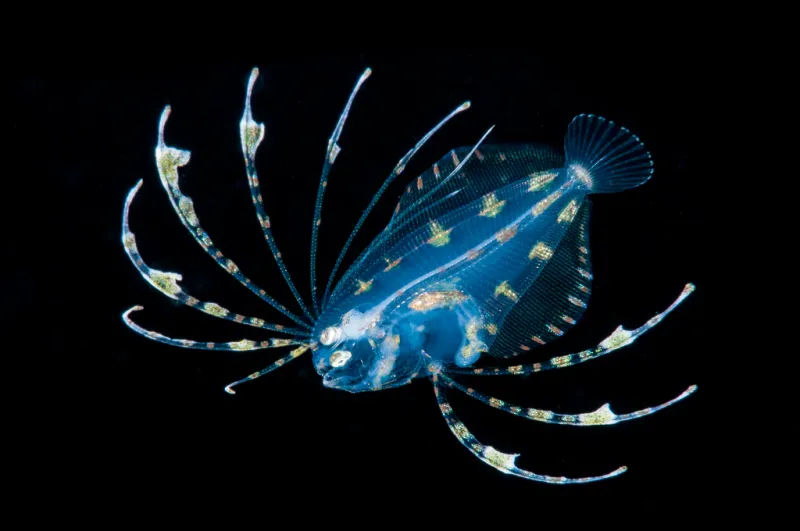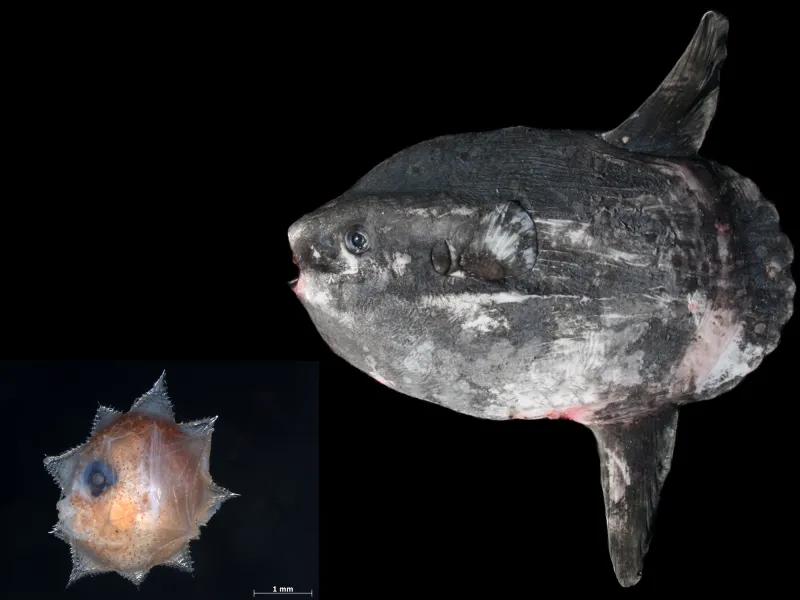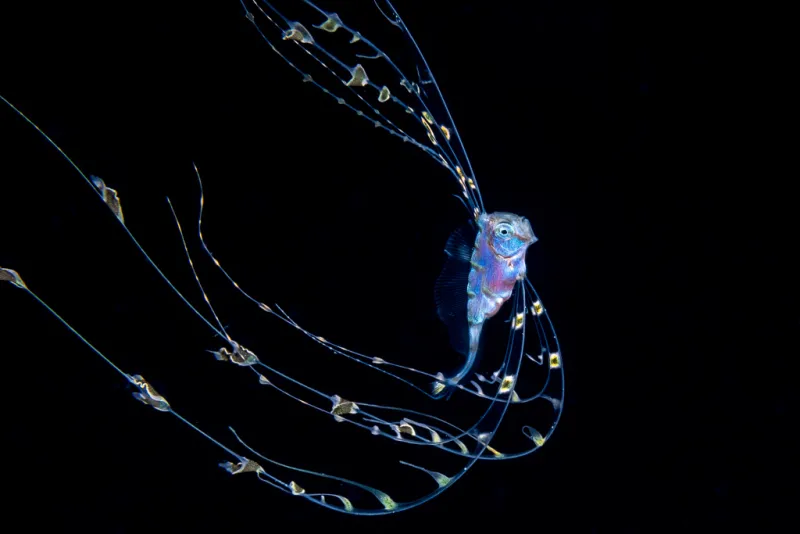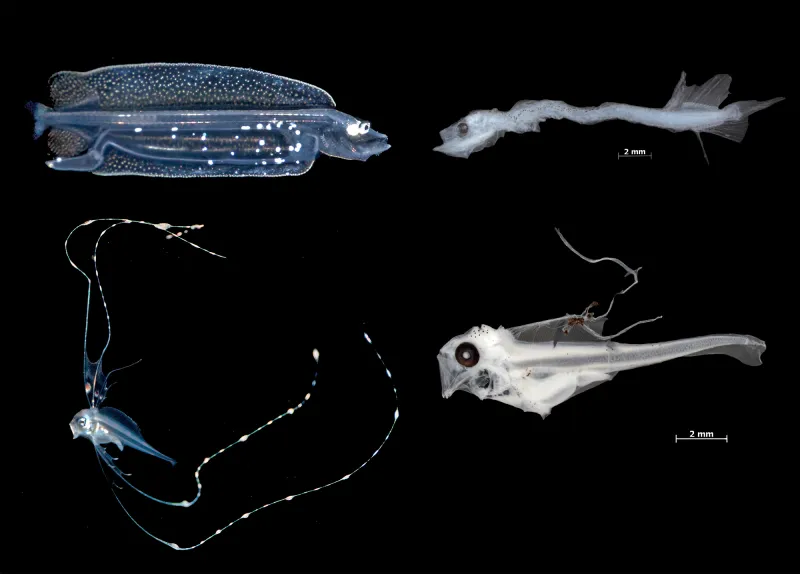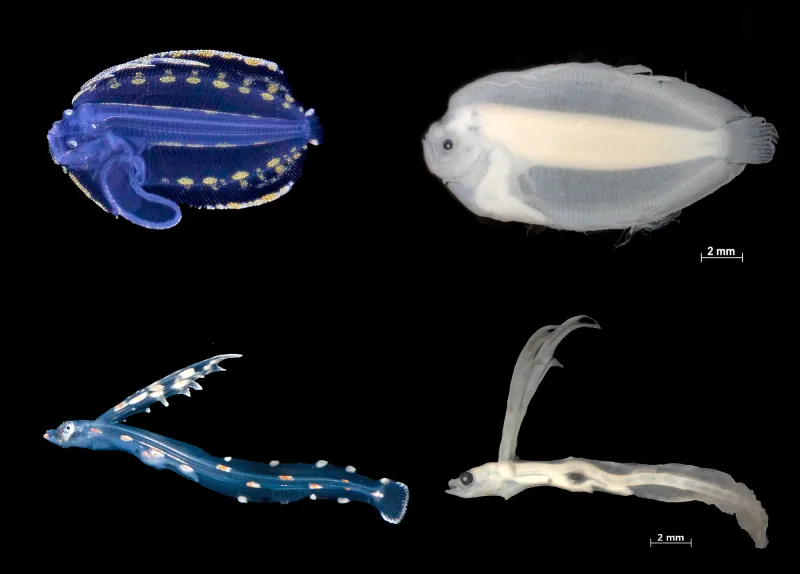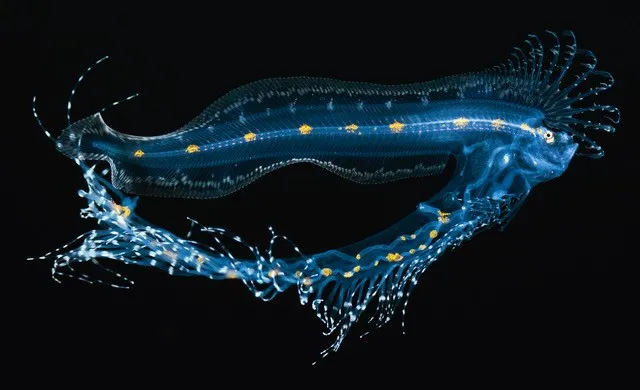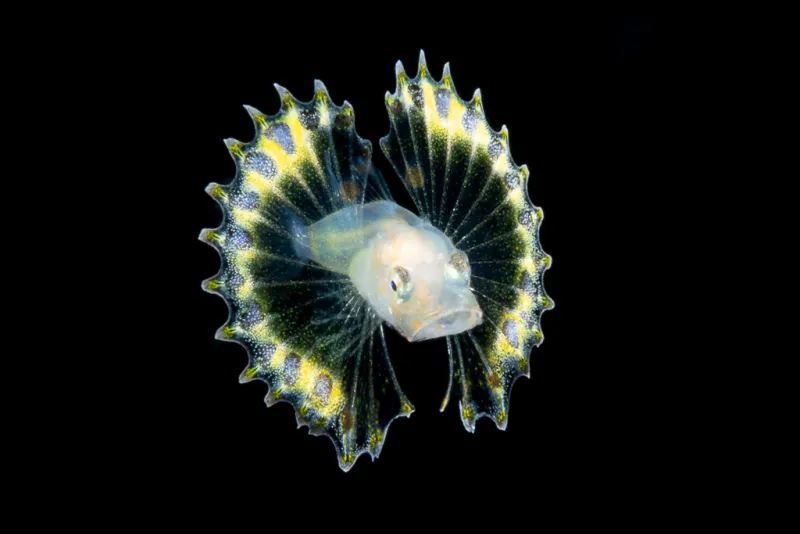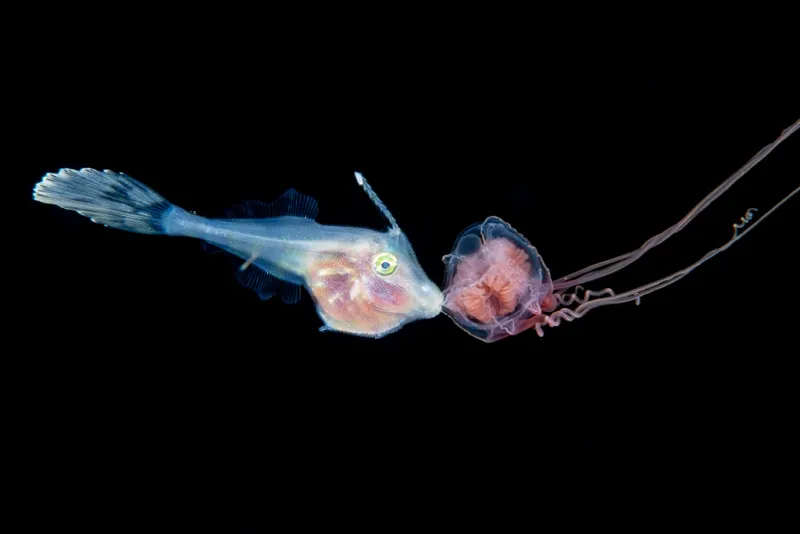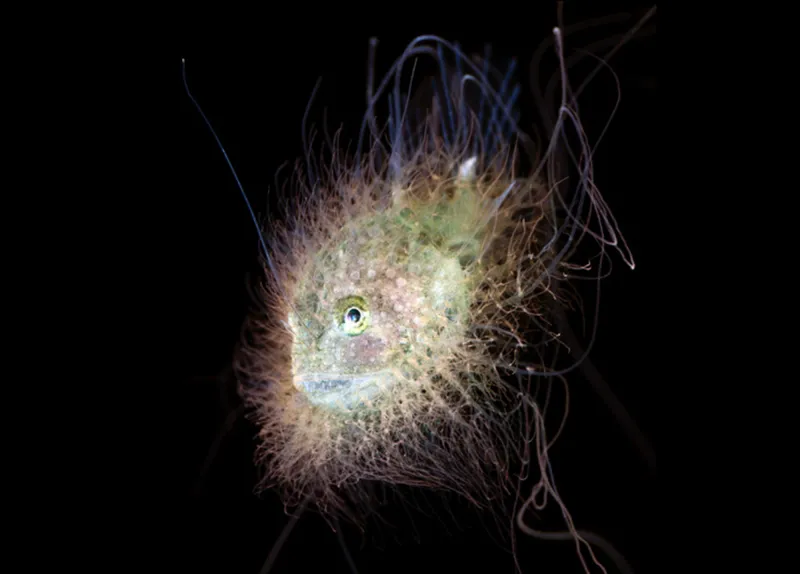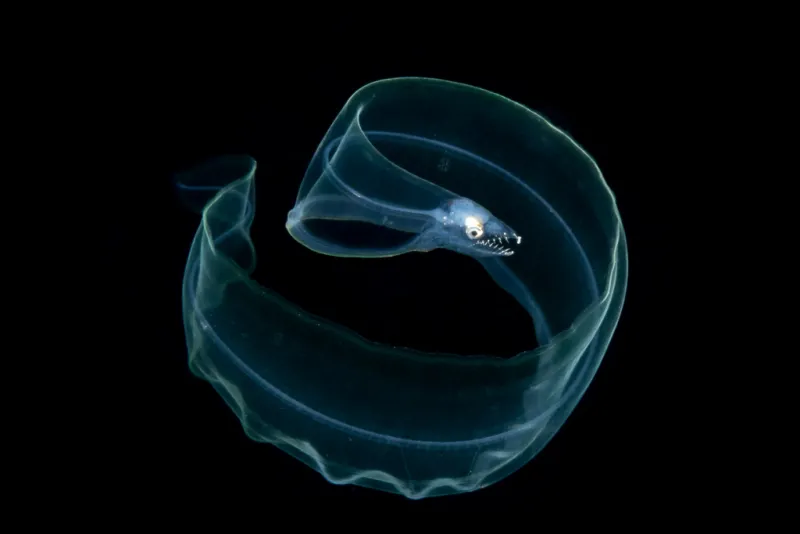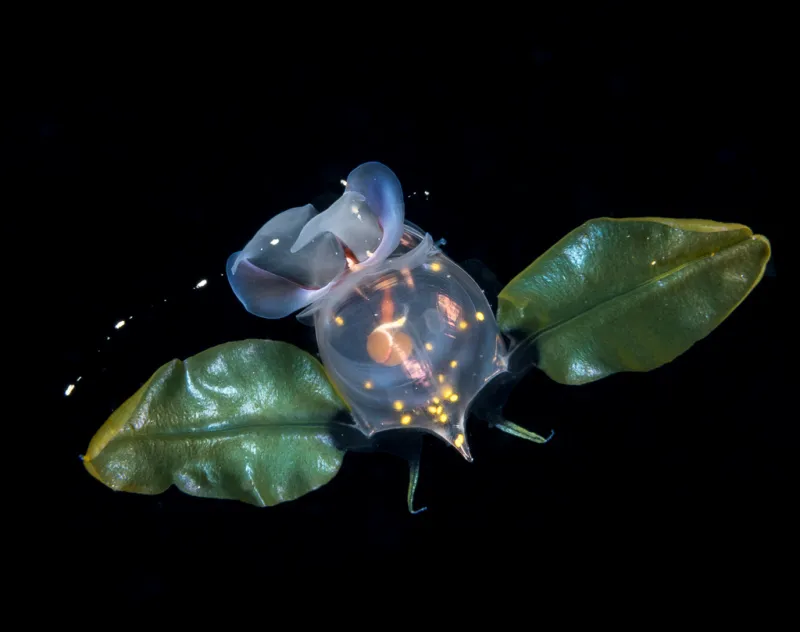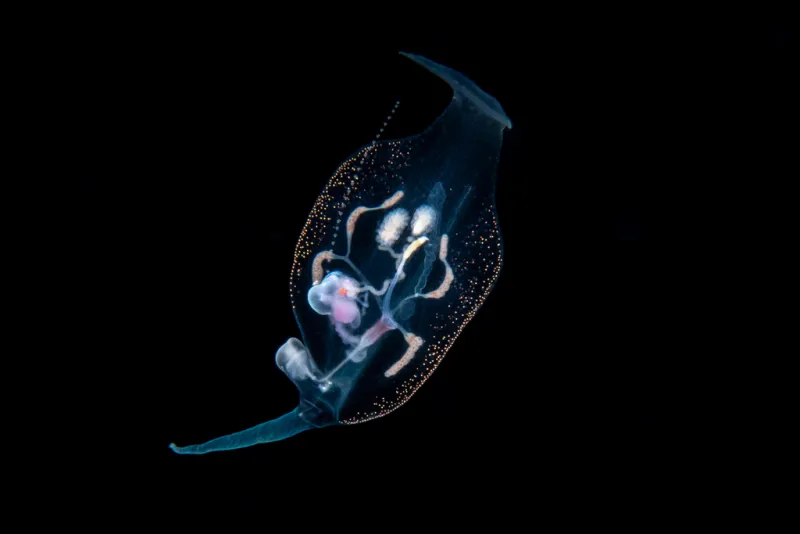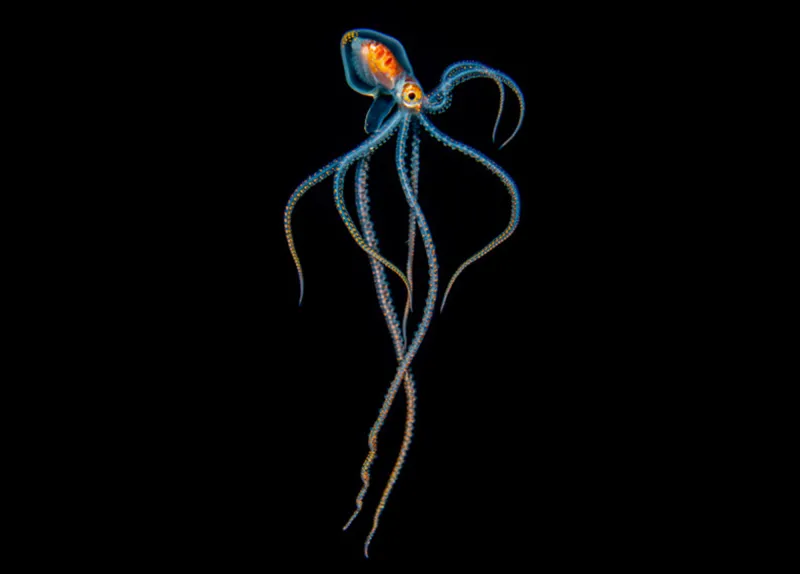slideshow
Blackwater Divers Illuminate Sea Life at Night
Blackwater diving is a recreational form of scuba diving that occurs during the dark of night. Descending into the epipelagic zone (0-200 m), divers sweep lights to illuminate organisms, many of which have risen from the deep ocean to feed under the cover of darkness. Most of these divers are also photographers, and as they encounter beautiful and bizarre creatures they are able to capture mesmerizing photographs of organisms few people in the world have seen alive. Even experts know little about the world of these open water species. What we do know about them comes from the specimens collected using large nets, which are then preserved in jars for later study. Because the specimens are removed from the environment and often damaged, it’s a method hardly ideal for understanding the true nature of their lives in the midwater.
Here we highlight a unique partnership between a group of blackwater divers and fish researchers at the Smithsonian’s National Museum of Natural History (NMNH) and Ocean Research Explorations in Hawaii. Curious about the creatures he was photographing, blackwater divers Jeff Milisen and Sarah Mayte reached out to Smithsonian research zoologist Dave Johnson and National Marine Fisheries Service scientist Bruce Mundy in the hopes of learning the species identifications. Both scientists had a lifetime of knowledge studying the intricacies of larval fish identification, yet this new way of viewing live specimens proved exciting. Impressed by the photographs on a blackwater diving Facebook group, Johnson wondered whether the blackwater divers could help in the study of the nocturnally migrating larval fishes. “It was fascinating. After years of collecting specimens, it’s spectacular to see alive specimens for the first time,” says Johnson. Following Smithsonian specimen collection protocols, the divers are now able to capture the fishes they photograph and send them to the Smithsonian to be properly identified by both Johnson and colleague Ai Nonaka. Many of the specimens are collected by Milisen and Mayte off the coast of Kona, Hawaii, though recently a few other divers from Florida have begun to contribute. After only a few years, the partnership is exposing major revelations about the larval fishes in this area of the ocean with many of the initial findings leading to a new scientific paper published in March, 2021.


